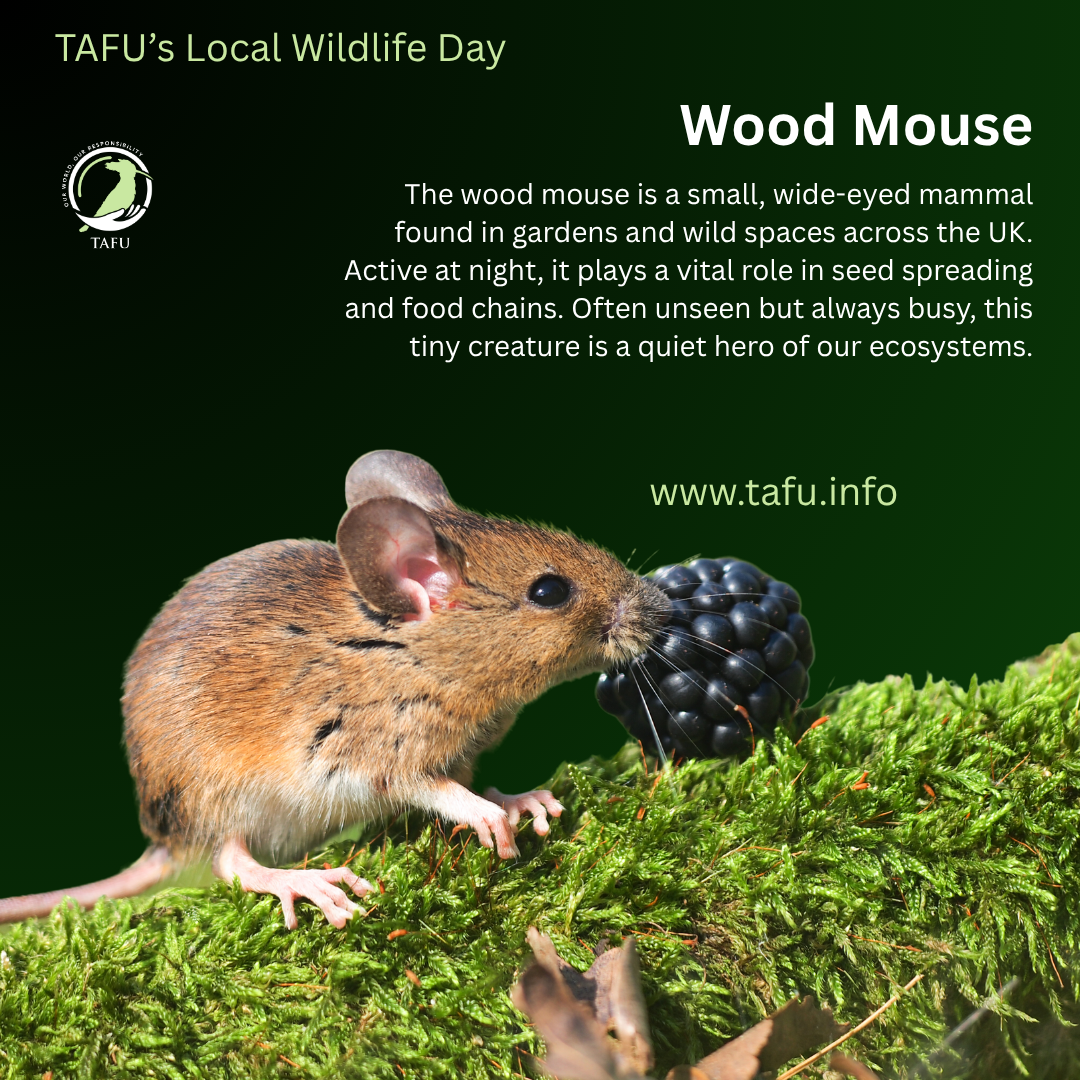Wood Mouse
Today’s Tiny Marvel – Day 9 before Local Wildlife Day
Today’s spotlight is on the delightful Wood Mouse (Apodemus sylvaticus) – a furry little night explorer you’ve probably met without even knowing!
The wood mouse is one of Britain’s most widespread and common small mammals. About 8–10 cm long, with a tail almost as long again, this mouse is easily recognised by its huge black eyes, long whiskers, sandy-brown fur, and pale belly. Its back feet are large and powerful, perfect for jumping – they can leap surprisingly far for their size!
Wood mice are found in almost every type of habitat across the UK, not just woodlands, as their name suggests. You’ll find them in gardens, hedgerows, fields, and even sheds or compost bins. They’re nocturnal, so during the day, they sleep in nests tucked safely away in burrows, tree roots, or under logs.
Their diet is varied and seasonal. They feed on seeds, berries, fungi, and even small insects. With their excellent memory and clever problem-solving, they’re famous for collecting and caching food in secret stores. If you’ve ever found an acorn where it shouldn’t be, you might have a wood mouse to thank!
Wood mice are essential in their ecosystems. They help disperse seeds, provide food for predators like owls and foxes, and play a big part in keeping our wild spaces ticking. Even their old burrows can become homes for other animals later on!
Their breeding season can stretch from early spring to late autumn. Females make cosy nests and may have several litters a year, with 4–7 babies in each. Young mice grow quickly and are independent within just a few weeks.
To help wood mice, avoid using rodenticides and try leaving quiet, undisturbed corners in your garden with logs, leaves, and ground cover. These tiny mammals are sensitive to changes and thrive where nature is left a little messy and wild.
Keep your eyes open at dusk, you might just catch a glimpse of a whiskery blur scurrying through the grass!

